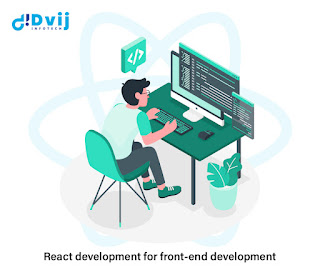Do You Want to Know How To Add Facebook Pixel To WordPress?
If you add the Facebook pixel to your WordPress website, you can obtain visitor activity data and use it to improve your ad targeting. The Facebook pixel collects information about your WordPress website visitors' actions from the moment they enter your site to the moment they leave it.
What is the Facebook Pixel, exactly?
It is an analytics tool that allows you to measure and optimize your Facebook ads by providing you with data on the actions taken by visitors to your website.
How does the Facebook Pixel function?
Facebook Pixel is a snippet of code that is loaded or fired whenever someone views the content on your landing page or website. The pixel tracks the following to match your website visitors to Facebook/Instagram users.
HTTP headers include IP addresses, web browser information, page location, document, referrer, and the user of the website.
Pixel-specific information includes the Pixel ID and the Facebook Cookie.
Button Click Data: the buttons that a visitor clicks, their labels, and the pages that the visitor opens by clicking the buttons.
Optional Values: You can also use Custom Data events to track conversion value, page type, and so on.
Form Field Names: email, address, quantity, and so on, for use when making a purchase.
You can integrate the Facebook Pixel into your website through WordPress or Facebook's Events Manager.
Facebook Pixel standard events for WordPress
The visitor activities captured by the Pixel assist you in understanding how they interact with your store. These activities include everything from landing on your store to interacting with products to checking out.
Add To Cart: Records information about visitors who add products to their shopping carts.
Add Payment Info: This event is triggered when a visitor enters payment information during the checkout process.
Initiate Checkout: Tracks the activities of visitors who click the checkout button.
Purchase: Tracks when customers finish a purchase and view the "Thank You" page in the checkout flow.
Search: Tracks information about visitors who use the store's search function to find information or products.
View Content: Tracks visitor activity on store pages such as product pages.
We will provide you with a beginner-friendly two different methods :
Using Manual Code
- Select the pixel you want to configure and then click Continue pixel configuration. Then click Manually install code.
- Copy and paste the pixel base code into a new document. Locate the header template in your CMS or web platform, or go to your website's header. Paste the base code at the bottom of the header section just above the closing head tag.
- Then press the Continue button. You can add events by using the Event setup tool or manually adding code to your website. Finally, click Done.
- Remember to manually enter the code into each of the individual pages where you want the pixel code to appear.
- The benefits of using PixelYourSite over the method described above include the ability to easily track conversions, as well as dedicated integrations for WordPress and Easy Digital Downloads. It also makes it easier to set up some of the more advanced aspects of Facebook Pixel and Custom Audiences.
- This feature is especially useful if you're using WordPress to power an eCommerce store.
- However, even if you only have a regular website, the custom audiences functionality can be useful for advanced Facebook advertisers.
Using Plugin Method
- For this, you must first create a Facebook Pixel in Facebook Ads Manager However, you do not need to add the Facebook Pixel to your site because the plugin will do so for you.
- Install and activate the PixelYourSite plugin as you would any other plugin.
- Then Navigate to the new PixelYourSite section in the WordPress dashboard sidebar.
- Next to Your Facebook Pixel, click the Click for Settings button. This will open up some new possibilities. The most important setting here is to enter the Facebook Pixel ID, which can be obtained via the Facebook Event Manager interface.
- Aside from that, you can customize the other settings to your liking. If you enable certain settings, you may need to enter some additional information (such as your conversion API token), but the PixelYourSite plugin does an excellent job of explaining how to access all of this information.
- You can see the direct links to documentation, such as "watch video" or "how to get it?": Once you've entered your Facebook Pixel ID and made your other selections make sure to save your settings (the save button is at the very bottom of the page).
- The benefit of using a plugin is that you can create custom audiences and conversion goals directly from your WordPress dashboard. Because it is dedicated to WooCommerce and Easy Digital, this plugin is especially useful for eCommerce stores.
How you can check whether the pixel is working or not?
To test your pixel, we recommend installing the chrome extension "Facebook Pixel Helper," which will tell you if you have a pixel installed on your website. You can see the following:
You'll be able to see the pixel ID and confirm that it matches the one that appears on your business manager's pixel page.
If you use an ad blocker, make sure you allow it for your website; otherwise, the pixel will not appear even if it is present.
We hope the above steps will help solve the problem of adding a Facebook pixel to a WordPress site.



Comments
Post a Comment